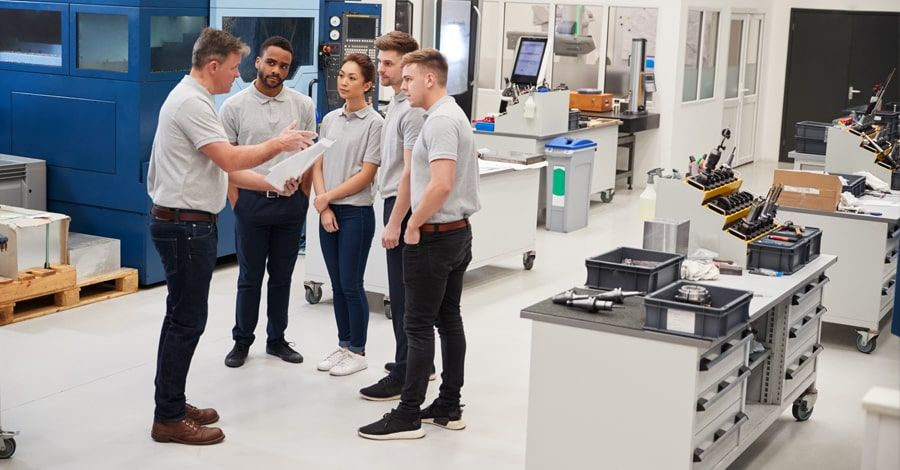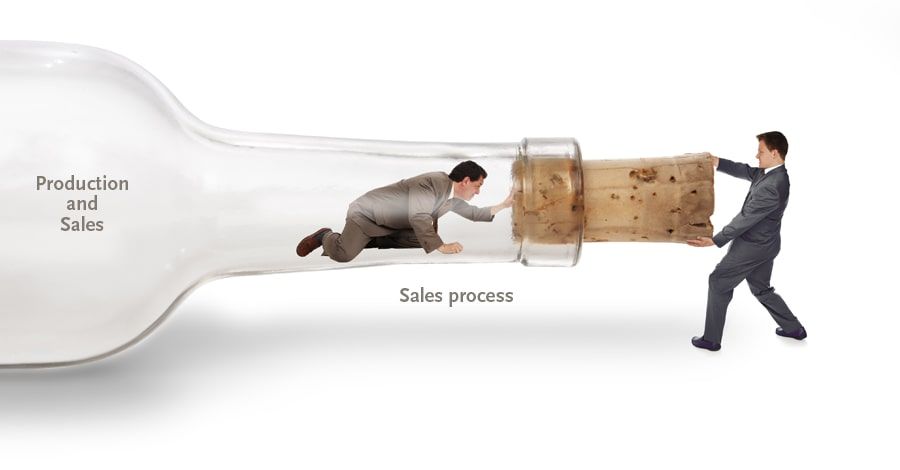(SPECIAL-PURPOSE) MACHINERY MANUFACTURE AND QUOTING SOFTWARE (CPQ): HOW DO THEY GO TOGETHER?
Over the past few weeks, I’ve had many discussions with companies involved in (special-purpose) machinery manufacture. Although the markets and products were slightly different, there were similar challenges when submitting quotations: customer requirements are often too individual and multifaceted to be met by standard products. This realisation forces the companies into a conflict of objectives involving quotation quality and deadline pressure.
When it should go quickly: budget proposals
At the beginning of the sales process, a budget proposal is often sufficient to illustrate how the customer requirement could be met. Combined with a rough estimate of costs, you can score points with a fast turnaround time and extensive design freedom. Besides a budgeting tool for the production-related part of the machine, a proposal requires a lot of experience from completed projects to be able to assess the customer-specific part. With increasing product complexity, this project knowledge exists (often exclusively) in the minds of project participants. As long as cloning is not a realistic option for knowledge duplication, an organisational bottleneck is inevitably created. You might even check whether this applies to your company during the next holiday season.
To the decimal place exactly: detailed quotations
A prospective customer wishing to make a technical and competitive appraisal of the offered solution will demand a detailed quotation. Based on the budget proposal, precise costing is drawn up of all previously estimated additional expenses. This need for detail reveals that the quality of the quotation also has its price, which is reflected in the number and time required by participating experts from the technical, sales, project management, construction and purchasing fields.
All in all, a detailed quotation can then take several weeks to complete, which can be problematic if the tendering period of the customer sets a different pace.
Important: distinction between open and closed configurators
When I talk to machinery manufacturers about a configuration solution for quotations, many associate it with the online assembly wizard for their next dream car. Completely understandably, the first reaction is: ‘That can’t work for our products!’
Despite the popularity of this comparison, closer inspection reveals its shortcomings. Car manufacturers offer their customers limited freedom to combine features listed in a specified catalogue of options. Such mechanisms are called closed configurators. In contrast, open configurators support both predefined and free variants. Transferred to the car example, it would allow the option of asking the customer for the maximum vehicle dimensions in order to ensure that the vehicle fits into the existing garage.
From the special-purpose machine to the configurable solution
How do machine manufacturers benefit from an open configuration solution? In most cases, the products consist of a machine base, various equipment options and customisation. Start with the analysis of your quotation & order history: identify the features and options that you have most frequently offered and delivered. Depending on the market and company, perhaps 50-80% of the total product can be configured as close to series production as possible. The remaining 20-50% ‘special’ adjustments can still be recorded and processed via free variants in the configuration.
Streamlined quotation processes thanks to Sofon
The variants within the Sofon Studio can be augmented with additional information. This includes technical restrictions, prices and translations. When making an offer, the sales employee quickly specifies a technically valid product using a guided question process. Costing and BOM are automatically generated in the background. If customer specific adjustments are necessary, the request is supplemented by the sales employee and the technical implementation by neighbouring departments with both written information and costing. After technical clarification, the pricing and commercial clearance takes place, so that quotations can be generated in different languages. After sending the e mail to the customer, the transfer to the CRM system takes place, along with automated quotation tracking. As soon as the order is placed, a technically clarified quotation can be converted into an ERP order - together with bills of material and work schedule.
Used by many - from machine manufacturers to shipbuilding
Sofon is already used by many companies manufacturing a range of products with a high degree of customisation. Perhaps this is best illustrated by the example of Damen Shipyards Group, which uses the Sofon solution to specify offshore customs vessels and patrol boats.
Incidentally, Damen Shipyards is now able to generate detailed quotations just as fast as budget proposals. More details can be found in the success story.
Interested in what Sofon can do for you? I’ll be happy to explain this in person!
Follow our LinkedIn company page to stay informed of all our blogs.






